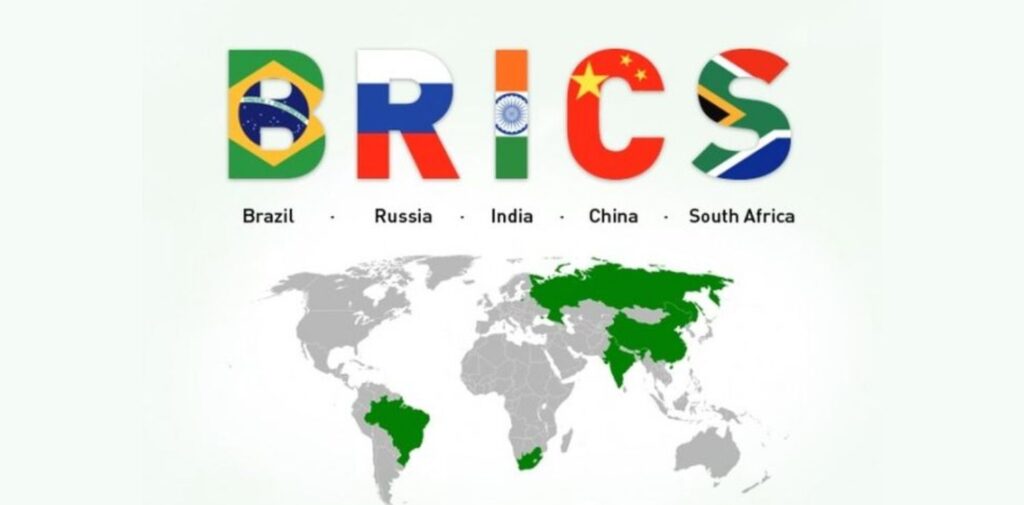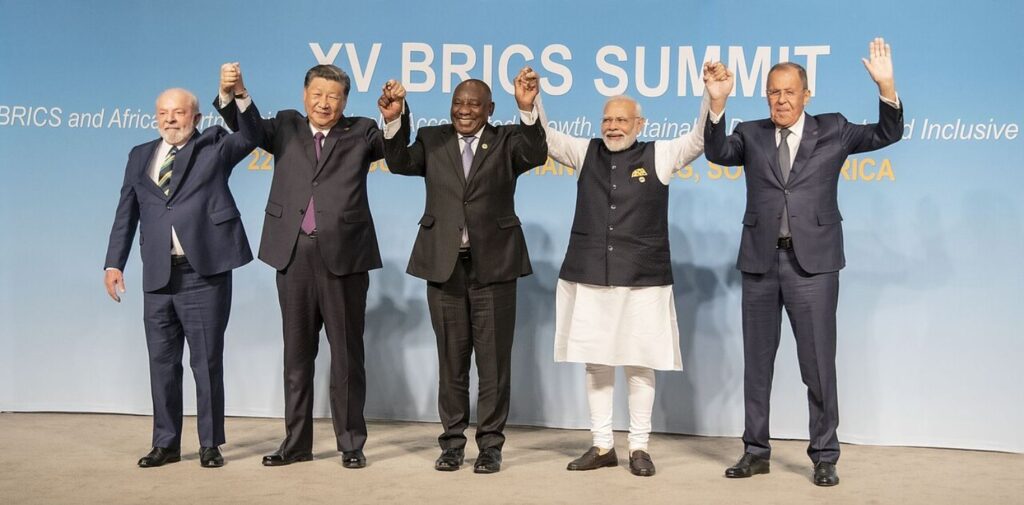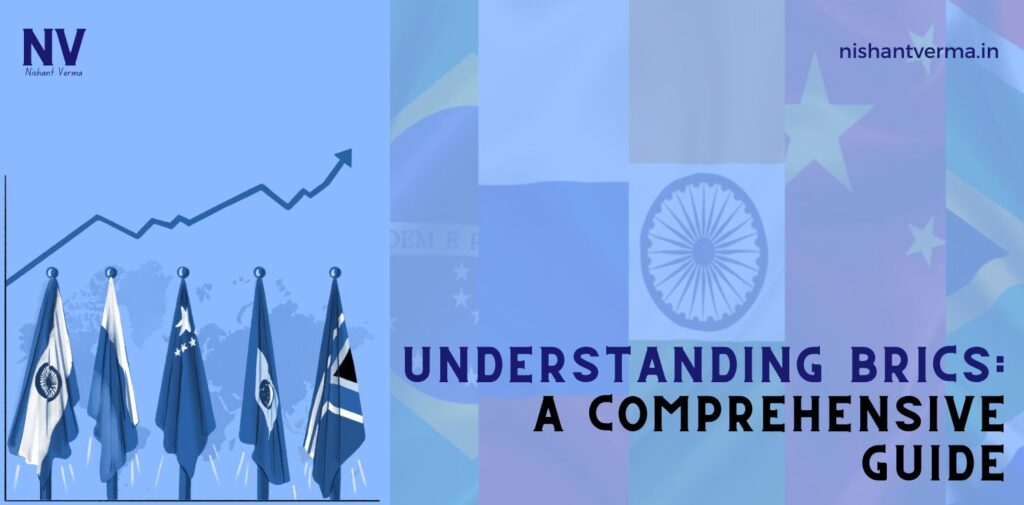What is BRICS?
BRICS is a coalition of five major emerging economies: Brazil, Russia, India, China, and South Africa. These countries collaborate to address global challenges, enhance economic growth, and promote sustainable development. The term “BRICS” highlights their collective strength and influence on the world stage.

The Significance of Understanding BRICS
BRICS is significant for several reasons:
- Population Representation: The member countries represent about 42% of the world’s population, making it a crucial player in global affairs.
- Economic Power: Together, BRICS accounts for approximately 23% of the global GDP, positioning it as an essential economic bloc.
- Diversity: Each country brings unique perspectives, cultures, and experiences, enriching discussions and collaborations.
- Global Influence: BRICS serves as a counterbalance to Western-dominated institutions, advocating for reforms in global governance.
The Formation of BRICS
The Initial Idea
The concept of BRICS was first proposed by Jim O’Neill, a British economist, in 2001. He used the term “BRIC” to describe the four rapidly growing economies of Brazil, Russia, India, and China, which he believed would become increasingly influential in global affairs.
Expansion with South Africa
In 2010, South Africa was invited to join, leading to the formation of BRICS. This inclusion was significant as it added an African perspective to the group, reflecting the continent’s growing importance in global economics.
The Need for BRICS
The formation of BRICS arose from several factors:
- Economic Interdependence: The member countries realized that they could achieve more by working together, especially in terms of trade and investment.
- Political Collaboration: The desire to have a stronger voice in international organizations, like the United Nations, motivated the countries to unite.
- Addressing Common Challenges: The nations faced similar issues, including poverty, inequality, and the need for sustainable development.
The History of BRICS
Key Milestones
- 2001: Jim O’Neill coins the term “BRIC” to highlight the economic potential of Brazil, Russia, India, and China.
- 2009: The first BRIC summit takes place in Russia, marking the formal beginning of diplomatic cooperation among the four countries.
- 2010: South Africa joins the group, and the acronym changes to BRICS.
- 2013: The New Development Bank (NDB) is established during the fifth summit in Durban, South Africa, to fund infrastructure and development projects.
- 2015: The BRICS Contingent Reserve Arrangement (CRA) is created to provide financial support to member countries facing balance-of-payments issues.
- 2019: The 11th summit is held in Brazil, where members focus on digital economy and innovation.

Annual Summits and Meetings
BRICS countries meet annually at summits to discuss various issues, set agendas, and promote cooperation. These meetings facilitate dialogue on a wide range of topics, including:
- Economic Development: Strategies to enhance trade and investment among member countries.
- Political Issues: Coordinating positions on global political matters, such as security and governance.
- Social Challenges: Addressing issues like poverty, education, and healthcare.
How BRICS Works
Structure and Mechanism
BRICS operates on a platform of cooperation and consensus. Here’s how it works:
- Leadership: Each member country takes turns hosting the annual summit, which is attended by the heads of state.
- Working Groups: Various working groups focus on specific areas such as:
- Finance: Discussing economic policies and investment strategies.
- Health: Coordinating responses to health challenges and pandemics.
- Science and Technology: Promoting collaboration in research and innovation.
- New Development Bank (NDB): The NDB finances projects aimed at infrastructure development and sustainability in member and other developing countries.
- Contingent Reserve Arrangement (CRA): A safety net for countries facing financial crises, providing liquidity support.
Areas of Cooperation
BRICS engages in cooperation across multiple sectors:
- Trade and Investment: Promoting bilateral trade and investment among member countries, reducing barriers, and facilitating market access.
- Cultural Exchange: Encouraging people-to-people connections through cultural programs and educational exchanges.
- Environmental Issues: Collaborating on climate change initiatives and sustainable development goals.
- Security: Addressing global security concerns, including terrorism and cybersecurity.
The Significance of BRICS in Global Context
- Economic Impact: BRICS countries collectively have significant economic power. They contribute to global growth and trade, and their cooperation can lead to increased investment in infrastructure and development projects, especially in emerging markets.
- Political Influence: By working together, BRICS aims to enhance the representation of emerging economies in global governance. This includes advocating for reforms in international financial institutions like the International Monetary Fund (IMF) and the World Bank, which are often criticized for being dominated by Western countries.
- South-South Cooperation: BRICS promotes cooperation among developing countries, emphasizing mutual support and shared experiences. This South-South cooperation fosters a sense of solidarity and encourages collaborative approaches to development.
Challenges Faced by BRICS
Despite its achievements, BRICS faces several challenges that could impact its effectiveness:
- Diverse Interests: The member countries have different political systems, economic conditions, and strategic priorities, which can lead to disagreements.
- Geopolitical Tensions: Conflicts between member states, particularly between India and China, can complicate collaboration and unity.
- Economic Disparities: The economic landscape of BRICS countries varies widely, leading to differing levels of commitment and capability for cooperative initiatives.
- Global Perception: BRICS is sometimes seen as a counterweight to Western dominance, which can limit its acceptance in some international circles.

The Future of BRICS
Looking ahead, BRICS has the potential to grow and adapt in several ways:
- Expansion of Membership: There have been discussions about expanding BRICS to include more countries. This could increase its global influence and represent a broader range of emerging economies. Potential candidates for membership include countries from Africa, Latin America, and Asia.
- Strengthening Cooperation: As global challenges become more complex, BRICS can deepen cooperation in areas like technology, health, and environmental sustainability. Collaborative efforts in response to issues such as climate change and pandemics are vital for the group’s relevance.
- Increasing Investment: The New Development Bank (NDB) could play a significant role in financing infrastructure projects not only within BRICS nations but also in other developing countries. By providing funding for sustainable projects, the NDB can contribute to global development.
Conclusion
BRICS is an essential platform for cooperation among major emerging economies. It represents a collective effort to address global challenges, promote economic growth, and enhance political influence. By understanding BRICS, we can appreciate the importance of collaboration in a rapidly changing world and the potential for emerging economies to shape the future.
Key Takeaways
- BRICS comprises Brazil, Russia, India, China, and South Africa, representing a significant portion of the world’s population and economy.
- The group was formed to enhance economic cooperation and political influence among its members.
- BRICS operates through annual summits and working groups focused on various sectors.
- Challenges such as diverse interests and geopolitical tensions exist but do not diminish its significance.
- The future of BRICS could involve expansion and deeper cooperation, especially in response to global challenges.
By learning about BRICS, we gain valuable insight into how countries can come together to create a more equitable and sustainable world. This cooperation emphasizes the importance of unity in addressing the pressing issues faced by developing nations and the global community as a whole.




